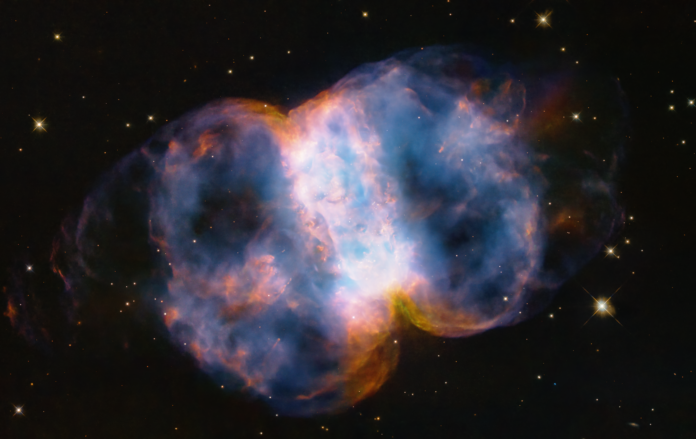
To celebrate the 34th anniversary of NASA’s Hubble Space Telescope, astronomers captured an image of the Little Dumbbell Nebula, also known as Messier 76 or M76. This nebula is located about 3,400 light-years away in the northern constellation Perseus, which is always visible in the night sky in that region.
The name ‘Little Dumbbell’ comes from its appearance, resembling a two-lobed structure made of colorful, mottled, glowing gases. Picture a balloon that has been pinched around its middle, creating two distinct lobes. These lobes are expanding into space from a dying star located at the center of the nebula. This dying star appears as a small, white dot amidst the colorful gases.
The gases in the nebula glow due to the intense ultraviolet radiation emitted by the dying star. This radiation heats up the gases, causing them to emit light. The red color seen in the nebula comes from nitrogen, while the blue color is due to oxygen. These colors create a beautiful and vibrant display in the cosmic landscape.
Overall, the Little Dumbbell Nebula is a fascinating celestial object that showcases the intricate beauty of our universe. Through the lens of the Hubble Space Telescope, astronomers can capture stunning images like this one, providing us with a deeper understanding and appreciation of the cosmos.
Source: NASA

























